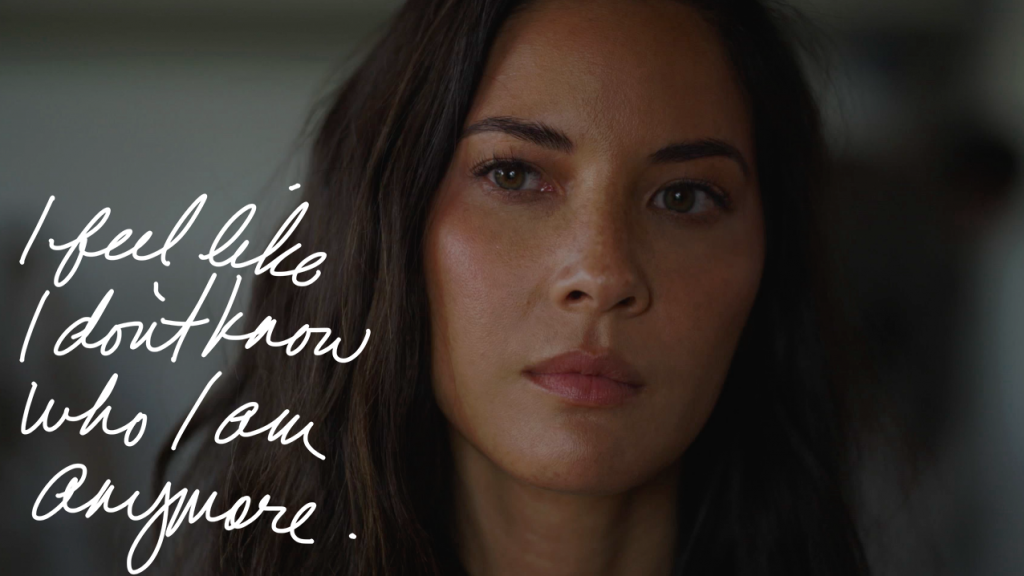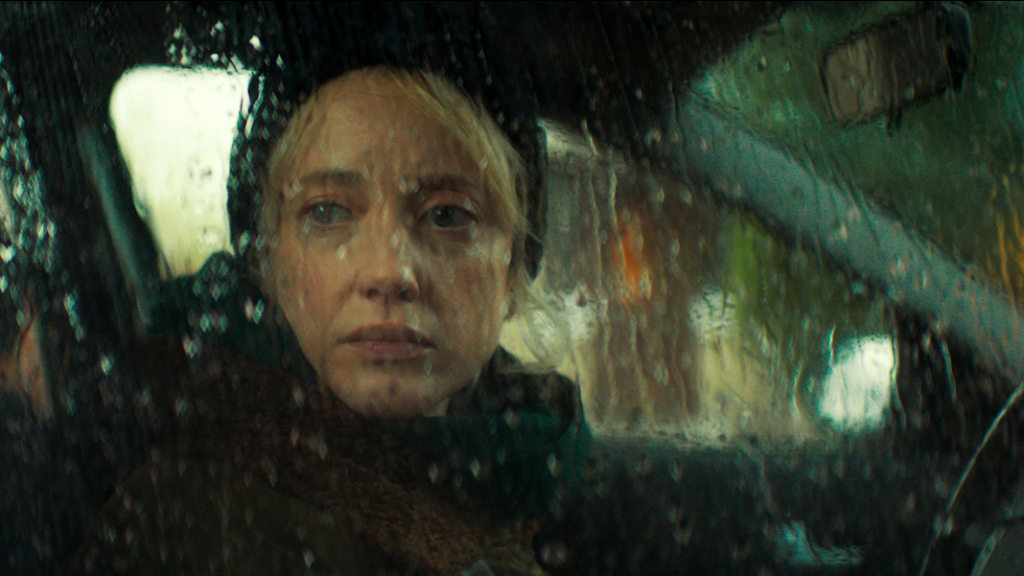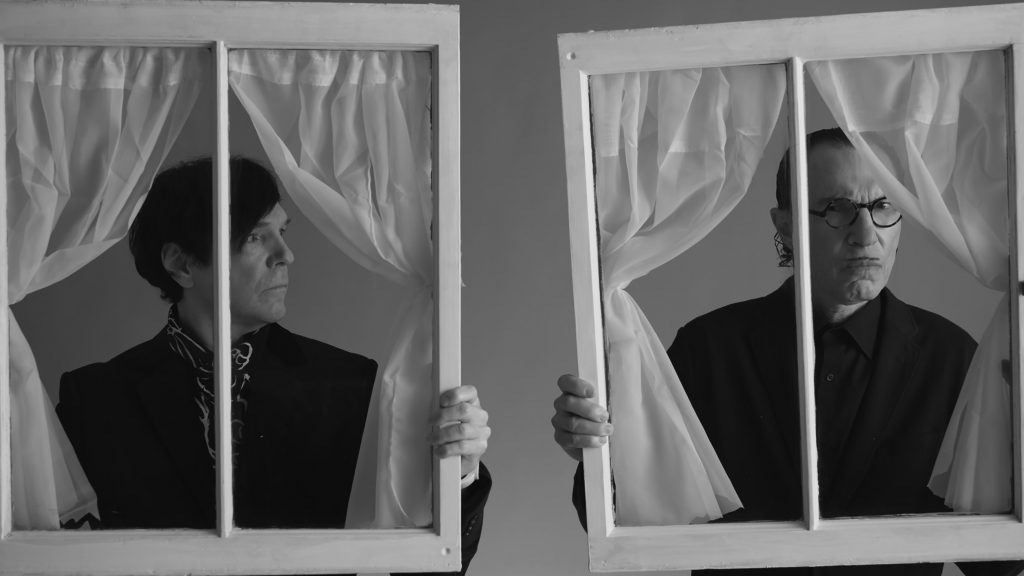It’s so funny how you wait for something forever and ever and then it just goes in a flash. It’s a sensation so many of us experienced as kids; waiting so long for Christmas morning only for it to go by in the blink of an eye. As adults, that experience gets replaced by events like South by Southwest 2021, which just seemed to speed right along. My second ever SXSW was a delight. Hopefully the next time I’m able to attend, I can do it in person. Here’s to that exciting notion, but long before then, we’ve got four final SXSW titles to unpack!
In the Same Breath

At the end of Nanfu Wang’s 2019 documentary One Child Nation, Wang talks about coming to America from China; where women were forced to get abortions after having one child to help manage to population. In the U.S., Wang noted how women were restricted from having abortions, a contrast to her home country. In her closing narration, Wang observed that, though the approaches to abortion may differ, the end result of both countries is to limit the autonomy of women.
The unexpected parallels between China and U.S. activity is once again reflected in Wang’s new documentary In the Same Breath. Her home country of China is the primary focus of the movie, specifically how it handled the coronavirus epidemic. In the earliest days of this health crisis, China’s primary maneuver was to silence those who raised awareness of COVID-19’s existence. Once the virus could no longer be maintained, state-run propaganda is used to utilize the pandemic as a means to show off China’s “strength” as a country.
Much like in One Child Nation, Wang’s filmmaking remains laser-focused on the human lives lost in the wake of decisions made for the benefit of political PR.
Even more than in that earlier documentary, China and America comparisons are a critical component of In the Same Breath. Specifically, footage of protestors against state lock-downs and wearing masks, as well as politicians lying about the severity of the virus, are used to depict a uniquely American form of ignoring the plight of others for personal gain.
The consequences of this behavior are highlighted in harrowing fashion in the most unshakeable moments of In the Same Breath; like the story of a famous YouTuber who highlighted the reality of China’s COVID-19 situation that eventually went missing. As the last fifteen months have shown, there’s no shortage of unsettling elements to be unearthed from this pandemic. The sheer amount of material that could be covered does leave In the Same Breath with an ending that, inevitably, feels abrupt.
With this pandemic still ongoing, Wang can’t offer an ultimate takeaway from the COVID-19 plague and how national governments responded to it. Still, she tries her best by warning about the dangers of governments who put their own needs above the humanity of its citizens. That scary scenario is only exacerbated in its eeriness by the health crisis chronicled intimately during In the Same Breath.
Violet

Chris Young’s 2011 hit single “Voices” concerns how he’s always hearing helpful pieces of advice from his loved ones.
I don’t think he was quite referring to the voice inside the head of the titular lead of Violet. A studio executive in California, Violet’s (Olivia Munn) everyday existence is dominated by a voice in her head (Justin Theroux). It always forces her to bottle up her emotions and stifle her own desires. If a male coworker begins acting aggressive, the voice tells her to just smile and nod. If she’s interacting with her crush, the voice says that she’s ugly and doesn’t deserve love. Every day is like this. Every day is miserable.
Writer-director Justine Bateman uses audio to reflect Violet’s self-doubts. For her actual desires, she opts for visual terms. Short phrases emerge through on-screen bursts of cursive writing that reflect what Violet really wants. When she’s pushing someone away, text appears reading “Don’t leave me”. The simple yet gutting language used in this visual motif effectively captures the yearning inside Violet that she crams inside. Even the use of cursive speaks volumes about Violet’s psyche. She’s always wanting everything to be perfect, to not show any flaws out of fear of how people will respond. Of course her interior thoughts would be rendered in a writing style meant to impress rather than just casual scribbles.
Further memorable visual elements used to explore Violet include appropriately jarring cuts to pieces of intense stock footage meant to symbolize her frustrations.
There’s also the detail of how overwhelming scenes gradually fade to a shade of red that covers the whole frame; a manifestation of how her worries become all-consuming. The execution of these individual concepts is incredibly thought-out. Bateman juggles all these audio and visual elements without seeming crowded; thanks to her never losing sight of Violet as a human being. All the editing, voice-over and cutaways are in service of this woman’s mindset, they never overwhelm the proceedings.
Through such careful filmmaking, Bateman offers detailed gaze into how Violet navigates the world with day-to-day self-doubt informed by societal expectations of “proper” behavior for women. It’s all so vividly and uniquely realized, especially since Bateman takes the time to emphasize how Violet’s voice can come in anywhere, anytime. It doesn’t just creep up in big arguments, something as simple as blowing out a candle triggers Violet’s own insecurities. It’s one of many thoughtful qualities that show how in touch with reality this feature is.
Those finer details are capably handled by Violet’s leading lady, Olivia Munn. Finally getting a substantive lead role after thankless parts in films like The Predator and Office Christmas Party, Munn is more than up for all the complicated nuances Violet throws her way. She’s especially good at portraying both the stifled and more openly vulnerable versions of her character as two different entities that could still believably be the same person. It’s just the kind of layered lead turn you’d want from a movie that evokes both Inside Out and the “Stupid Piece of Sh*t” episode of BoJack Horseman. Through those pop culture comparisons, you can tell that Violet cuts to the bone and that it’s something special.
Here Before

Laura is living a quiet life in the British suburbs with her son and husband in the wake of the death of their young daughter.
The arrival of some new next-door neighbors appears to be just another everyday occurrence. Until the daughter of the neighbors starts growing attached to Laura (Andre Risborough). There’s nothing inherently wrong with that, but once that daughter starts saying she’s Laura deceased offspring, things get weird. Is Laura going insane or has her dead daughter really come back to her?
Here Before is a prime example of one of those films that can’t quite function as a trashy thriller nor can it operate as a straightforward domestic drama. On the one hand, the whole thing’s too restrained and predictable to work as suspense. You can see every development coming a mile away. Writer-director Stacey Gregg never takes things grandiose enough to make Here Before work as entertainment.
That foible of predictability also undercuts the project working as a gripping down-to-Earth exploration of coping with grief; as does the underwritten characters. The people in Laura’s life never feel like fleshed-out human beings, with her teenage son being especially poorly-written. He alternates between being a brooding loser or someone deeply invested in the familiar drama on a whim; seemingly based on just what the story needs at that exact moment. You need compelling characters to make a character-based drama work and Here Before just doesn’t have an abundance of those.
If there is a saving grace here, it’s that modern horror fixture Andrea Riseborough does great work in capturing the complicated anguish of a woman being confronted by her traumatic past.
Her performance has a sense of immediacy and authenticity that the rest of the production lacks. Gregg also briefly incorporates interesting visual flourishes to reflect the interior psyche of Laura that made me yearn for more avant-garde digressions. As it stands, Here Before is plainly normal and even more forgettable.
The Sparks Brothers

You may not have heard of the band Sparks but you sure know their influence.
This American pop-rock band, formed in the late 1960s, has had an enormous impact on so many artists; thanks to the creative vision of its two permanent members: brothers Ron and Russell Mael. They’re an unusual duo who never use the same sound twice; are always embracing provocative lyrics and have never quite achieved super stardom. They may not be household names but Edgar Wright’s documentary The Sparks Brothers seeks to give the broader public an appreciation for what Sparks is and their accomplishments as artists.
Wright is an unabashed superfan of Sparks; to the point of being one of the celebrities interviewed to explain the appeal of the band’s music. This level of commitment to Sparks results in a film that goes in-depth on the groups twenty-five albums while maintaining the mystique of Ron and Russell Mael by refusing to delve into their personal lives. There’s no shortage of information here, much of it delivered through the reliably zippy and imaginative filmmaking of Edgar Wrght. If there’s a flaw to Edgar Wright’s loving approach to The Sparks Brothers, however, it’s that it ends up making the struggles of Sparks feel like less palpable than they should.
Sparks’ struggles as musicians don’t come across here as particularly harrowing. There’s an amusing anecdote about the Mael brothers using food stamps shortly after performing on TV; but we never get the sense of an album that fizzled out critically. Sparks never became The Beatles but they’re always shown as being extremely popular in some country; resonating with some form of the public.
Compared to the forgotten but masterful musicians chronicled in other rock documentaries like Anvil! The Story of Anvil or Searching for Sugar Man, the band at the heart of The Sparks Brothers honestly seems to have gotten it pretty good.
The love Wright has for this band is certainly a curse in how it fails to properly convey these guys as underdogs; undercutting the kind of dramatic momentum you need to justify the overlong 144-minute runtime. On the other hand, that same quality is also a blessing in how the The Sparks Brothers makes it clear why this band is so worthy of being re-evaluated as something important. Rather than being an insular experience for the converted, The Sparks Brothers totally feels like something that could help make a whole new generation of fans of this band.
Just the archival footage of the strange live performances of Sparks, particularly anytime it cuts to Ron and his expressionless face playing away on the keyboard. Meanwhile, lyrics from their tunes like “My baby’s taking me home” will be stuck in your head for days afterward. The structure of The Sparks Brothers could have used either more conflict or a trim in the editing room. However, Wright’s gifts as a filmmaker and his love for this band do make it a documentary you can’t help but groove with it.
Douglas Laman is a freelance writer providing SXSW coverage for Offcultured.
Header: Violet | Credit: Mark Williams
